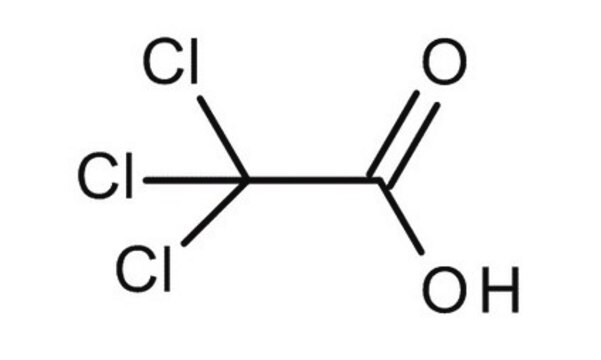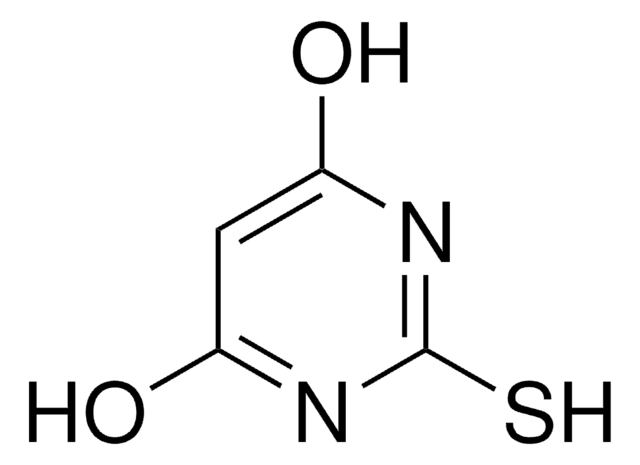T4885
Trichloroacetic acid
≥99.0% (titration)
Synonyme(s) :
TCA
About This Item
Produits recommandés
Densité de vapeur
<1 (vs air)
Niveau de qualité
Pression de vapeur
1 mmHg ( 51 °C)
Essai
≥99.0% (titration)
Forme
powder or crystals
Indice de réfraction
n20/D 1.62 (lit.)
pH
1 (at 25 °C, 81,7 g/L)
pb
196 °C (lit.)
Pf
54-58 °C (lit.)
Solubilité
H2O: 1 g/10 mL
Densité
1.62 g/mL at 25 °C (lit.)
Groupe fonctionnel
carboxylic acid
chloro
Température de stockage
2-8°C
Chaîne SMILES
OC(=O)C(Cl)(Cl)Cl
InChI
1S/C2HCl3O2/c3-2(4,5)1(6)7/h(H,6,7)
Clé InChI
YNJBWRMUSHSURL-UHFFFAOYSA-N
Vous recherchez des produits similaires ? Visite Guide de comparaison des produits
Catégories apparentées
Application
- β-enaminones via condensation reaction of 1,3-dicarbonyl compounds and amines.
- 6-amino-3-methyl-1,4-diphenyl-1,4-dihydropyrano[2,3-c]pyrazole-5-carbonitrile derivatives via four-component condensation reaction of ethyl acetoacetate, phenylhydrazine, malononitrile, and aromatic aldehydes.
- Tetrahydrobenzo[a]xanthen-11-ones by three-component reaction of aldehydes, 2-naphthol and dimedone.
Mention d'avertissement
Danger
Mentions de danger
Classification des risques
Aquatic Acute 1 - Aquatic Chronic 1 - Eye Dam. 1 - Skin Corr. 1A
Code de la classe de stockage
8B - Non-combustible corrosive hazardous materials
Classe de danger pour l'eau (WGK)
WGK 2
Point d'éclair (°F)
>235.4 °F - closed cup
Point d'éclair (°C)
> 113 °C - closed cup
Équipement de protection individuelle
Eyeshields, Faceshields, Gloves, type P3 (EN 143) respirator cartridges
Faites votre choix parmi les versions les plus récentes :
Déjà en possession de ce produit ?
Retrouvez la documentation relative aux produits que vous avez récemment achetés dans la Bibliothèque de documents.
Notre équipe de scientifiques dispose d'une expérience dans tous les secteurs de la recherche, notamment en sciences de la vie, science des matériaux, synthèse chimique, chromatographie, analyse et dans de nombreux autres domaines..
Contacter notre Service technique





